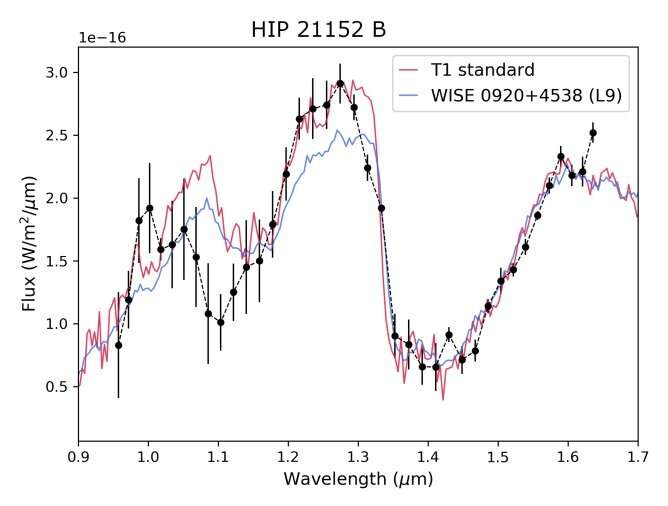May 11, 2022 report
European astronomers discover four new brown dwarfs

Astronomers from the Astronomical Observatory of Padova, Italy, and elsewhere have conducted observations of 25 stars as part of the COPAINS Pilot Survey. As a result, they detected four new brown dwarfs that received designations HIP 21152 B, HIP 29724 B, HD 60584 B and HIP 63734 B. The finding is reported in a paper published May 4 on the arXiv pre-print server.
Brown dwarfs are intermediate objects between planets and stars, occupying the mass range between 13 and 80 Jupiter masses (0.012 and 0.076 solar masses). Although many brown dwarfs have been detected to date, such objects orbiting other stars are a rare find.
Now, a team of astronomers led by Mariangela Bonavita reports the detection of four such objects. The discovery was made with a new tool known as Code for Orbital Parametrization of Astrometrically Inferred New Systems (COPAINS). It was part of a pilot survey conducted with the Spectro-Polarimetric High-contrast Exoplanet REsearch (SPHERE) instrument, an extreme adaptive optics facility at ESO's Very Large Telescope (VLT), which employed the COPAINS tool for informed target selection.
"We present the results of the COPAINS Survey conducted with SPHERE/VLT, searching for sub-stellar companions to stars showing significant proper motion differences (∆µ) between different astrometric catalogs. We observed twenty-five stars and detected ten companions, including four new brown dwarfs: HIP 21152 B, HIP 29724 B, HD 60584 B and HIP 63734 B," the authors of the paper explained.
The newly found brown dwarfs are sub-stellar companions of relatively young stars (with ages below one billion years). The masses of these stars are estimated to be between 1.04 and 1.44 solar masses.
According to the study, HIP 21152 B, HIP 29724 B, HD 60584 B and HIP 63734 B have masses at a level of 0.032, 0.063, 0.028 and 0.012, respectively. They are separated from their host stars by 18.3, 6.3, 16.6 and 30 AU, respectively.
The researchers note that their discovery underlines the ability of COPAINS to constrain the underlying planet and sub-stellar companion population. They added that surveys like COPAINS offer an undeniably efficient selection method, providing a much higher success rate (compared to other surveys) with a considerably smaller time commitment.
"The high detection rate obtained here strongly validates the use of such approaches in survey designs, despite the numerous assumptions and limitations of the work conducted in this pilot survey," the astronomers noted.
They hope that the upcoming third data release (DR3) from ESA's Gaia satellite, expected in June 2022, combined with COPAINS, will yield more interesting discoveries of sub-stellar companions. They added that it will allow for a significant improvement of the method in terms of uncertainties, thus allowing future surveys to truly focus on targets with accelerations caused by planetary mass companions.
More information: M. Bonavita et al, Results from The COPAINS Pilot Survey: four new brown dwarfs and a high companion detection rate for accelerating stars. arXiv:2205.02213v1 [astro-ph.SR], arxiv.org/abs/2205.02213
© 2022 Science X Network




















